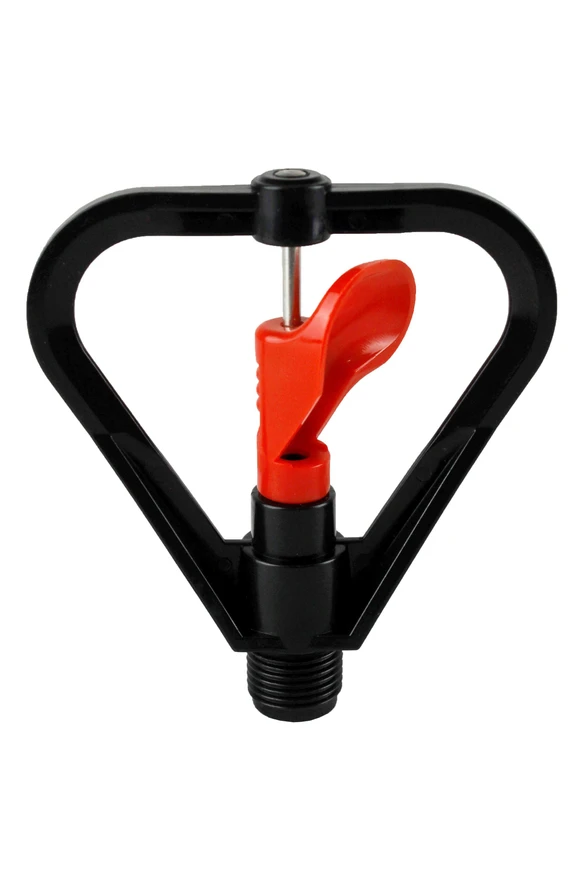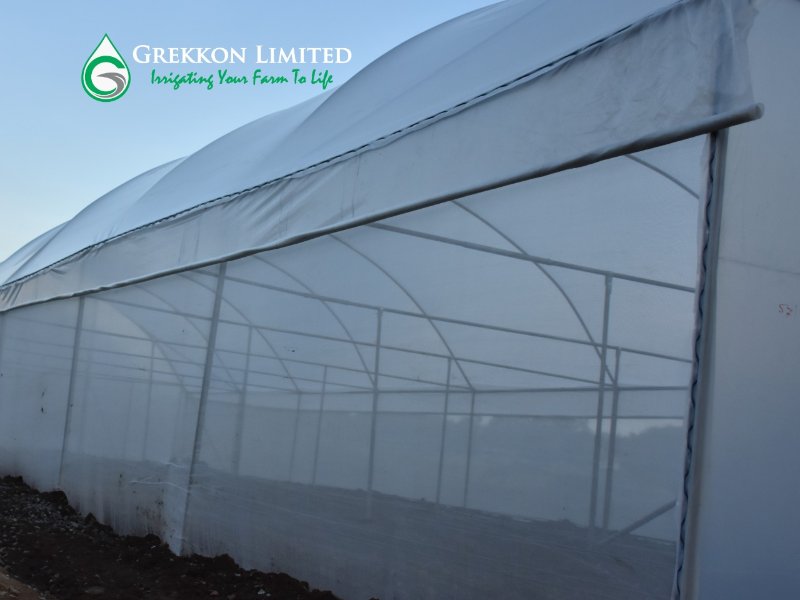
Greenhouse Paper In Kenya
Grekkon Limited’s greenhouse paper in Kenya is of various rent characteristics. These characteristics determine it’s overall performance on the crop. The paper choice is the same irrespective of the greenhouse type by shape, or by structural material. Our greenhouse paper price in Kenya is Kes 96/M sq irrespective of the polythene properties
Greenhouse Paper In Kenya; Properties
- Thickness. 200 microns/ 0.2mm
- Colour . Clear or yellow
– clear paper allows more light. This is good for fruiting crops such as tomato, strawberry, capsicums, and peppers. This is because more light has higher photosynthesis, which equates to more food for the plant. It is necessary for bi-color or multi -color flowers to enhance the different colors
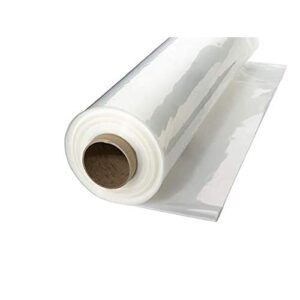
– yellow paper will be for leafy vegetables, herbs, spices, and mono color flowers. These require less food as they are not fruiting
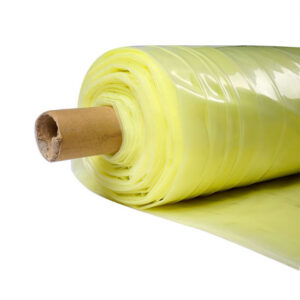
3. Width 5.5M, 8M, 16M. This not split but supplied as such to the grower
4. Roll length of 100M. The roll is cut as per client’s ordered length
5. UV treated. UV treatment blocks off excess UV light which in turn enhances the greenhouse paper lifespan. Our UV treatment is for 3 years/ 36 months. This warranty is on the paper
6. Anti-drip properties. Anti drip treatment prevents dew drop lets from forming on the greenhouse paper. Dew formation is as a result or crop respiration which releases moisture from the plant. Dew droplets falling or crops in the greenhouse pr-dispose the crop to fungal infections. The droplets also refract light, limiting the amount of light falling on the crop
How to choose your greenhouse polythene
- By crop. Is it a leafy or fruiting vegetable? Is is s mono or bi/ multi-coloured flower? This determines the paper color
- By width. There are different widths to choose from based on your greenhouse structure size
When the greenhouse paper tears, we provide a greenhouse repair tape that has the same characteristics as the greenhouse paper
FAQs
I. How much is greenhouse polythene in Kenya?
Greenhouse polythene price in Kenya
| Price | Treatment |
| Kes 95/M sq | With anti -UV only |
| Kes 120/M sq | With additional anti-drip treatment |
II. What plastic can be used for greenhouse?
Yellow or clear plastic are the choices for a greenhouse cover
III. What is the best poly for a greenhouse?
As explained above, the right greenhouse plastic depends on the crop type
IV. How do you attach polythene to a greenhouse?
For a metallic greenhouse, steel profiles and wiggle wires secure the paper against the steel frame
V. How long does polythene last on a greenhouse?
Our anti-UV block treatment is guaranteed for 36 months use. However, the paper itself will last for 5 years
VI. How thick should greenhouse poly be?
200 to 220 micron
VII. How often do you replace greenhouse plastic?
We recommend every 3 years so which is when the anti-UV block ceases
How to Keep Your Greenhouse Polythene Tight
- Spread out the paper on the greenhouse structure early in the morning or late in the evening when he temperature is below 20 degrees celcius. If it’s too hot, the paper will tear on contraction when it gets cold. If it’s too cold, the paper will sag when the temperature rises
- Roll it or pull it from one end to the next frame or runner and secure it with a profile and wiggle wire. Then stretch it again for this point to the next and so on
- Avoid covering in the afternoon when it is very windy as this will cause the paper to tear
How To Maintain Your Greenhouse Sheet
Observing these habits will keep your greenhouse polythene price in Kenya at the barest minimum
- Have a greenhouse tape for minor repairs when the paper is torn. Grekkon Limited’s greenhouse tape is UV resistant, trans-parent and is designed for outdoor use
- Clean your greenhouse cover monthly to prevent algae, moss, and dust which inhibit light from shining through
- Change it at the right time, which is when the anti-UV treatment expires
Caution: Do not use your greenhouse polythene in awater pan or tank to store or harvest irrigation water
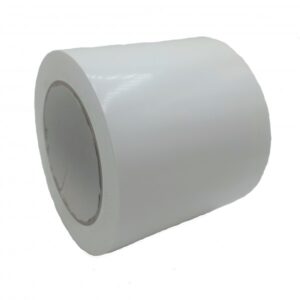
Greenhouse repair tape. It has the same qualities as the greenhouse paper
Greenhouse polyethylene price in Nairobi
This is Kes 96/ M sq in Nairobi and all our up country branches
Overhead Sprinklers For Irrigation
Grekkon Limited is an irrigation equipment supplier in Kenya. We design, supply, and install all types of overhead sprinklers for irrigation systems, for every acreage and crop. Our overhead sprinklers for irrigation in Kenya are of different types, for different crops, acreage and locations. This is why our technical or agronomy team will visit a grower who needs to install one
It is to assess the land layout and size, topography, water location, water volume, existing water pump if any, and the crop. Through this survey, we recommend the most appropriate sprinkler irrigation kit for the grower based on their budget. For instance, a grower with 100 acres of orchard will have a different sprinkler from a 100 acres of a park covered with grass. Similarly, a farmer on an 1/8 acres of cabbage will have a different sprinkler irrigation kit than the one with 30 acres of cabbage
Overhead Sprinklers For Irrigation
Types
We have these 5 overhead sprinklers for sale types shown below available. For most, there are both metallic and plastic versions. Metallic sprinklers have a longer lifespan, but are costlier and heavier. Plastic sprinklers are lighter, cheaper, but have a shorter period of operation. The body material does not affect the pressure rating, inlet and outlet sizes or the water discharged. For technical details on each type, click on the title links given for every sprinkler
- Rain gun sprinklers for medium-sized to large acreage. Available sprinkler sizes are; 1″, 1-1/4″, 1-1/2″, 2″, and 2.5″. We supply and install the double nozzle PY, Atom, and flange type rain guns. The latter are for broad acreage and require very high water volume, and high operating pressure

An ordinary size rain gun sprinkler at work after installation by Grekkon Limited
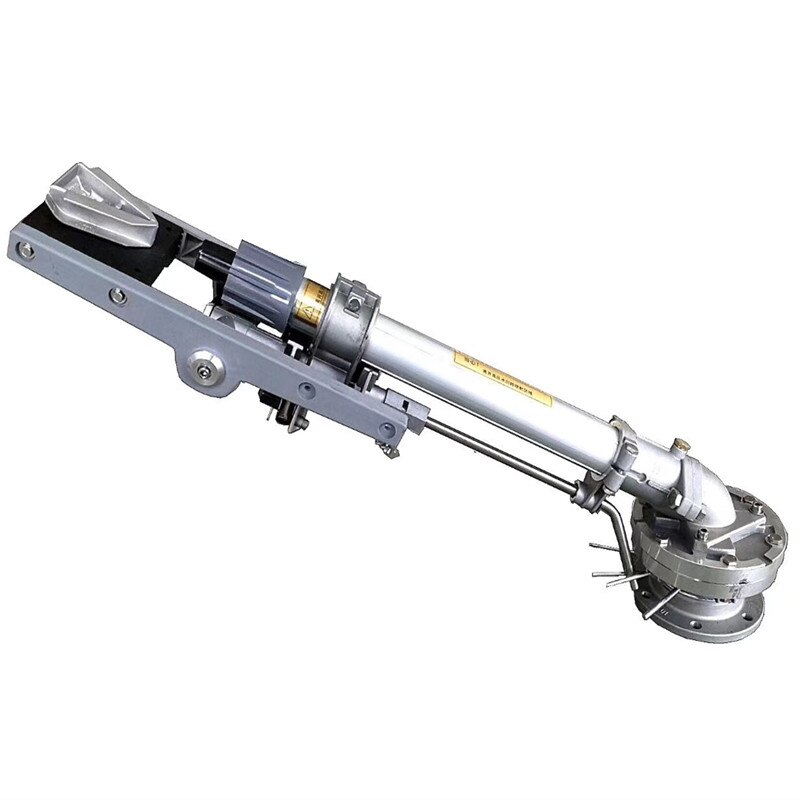
2.5″ giant flange type rain
A flange type rain gun video at work
2. Plastic or brass impact sprinklers for small to medium sized acreage. Our sizes are; 1/2″, 3/4″ and 1″ which have either 2-way, 3-way or 4-way nozzles
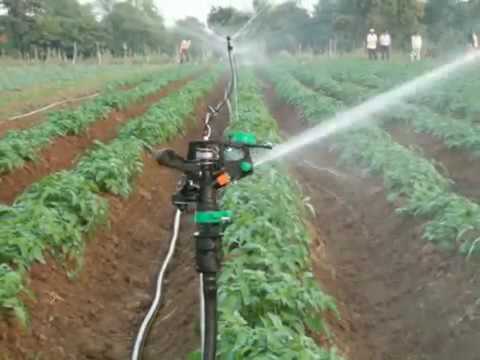
Plastic impact sprinklers
3. Mega-net sprinklers for small to medium-sized areas. We have the 1/2″, 3/4″ and 1″ which have a spray angle of 180 degrees
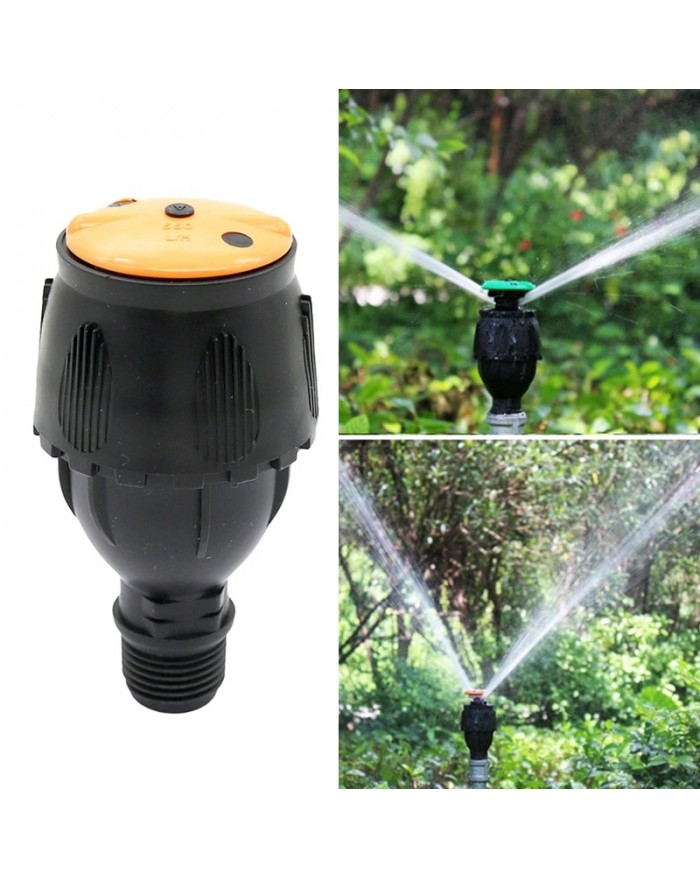
A mega net sprinkler
4. Micro sprinklers for orchards and small areas with a spray angle of 360 degrees

Micro sprinklers in an orchard
5. Pop up sprinklers for lawn irrigation. Our sizes are1/2″ and 3/4″ which spray up to 360 degrees

A lawn pop up sprinkler
6. Butterfly mini sprinklers for small gardens or and lawns available as 1/2″
How to choose your overhead sprinklers in Kenya
- Land size. Rain guns for large acreage, and micro-sprinklers for small plots of land
- Crop type. Pop-ups for lawn irrigation, all other sprinklers for field crops
- Ground elevation. Gravity power from high elevations will swing micro and impact sprinklers. Rain guns, Meganets, and pop-ups work with water pumps
- Grower’s budget. It determines the sprinkler type and number of units to install
Our sprinkler irrigation system design considers the above 4 factors during our site visits conducted before a sprinkler irrigation system is installed
Components of an overhead sprinkler irrigation system
- Mainline. This is PVC, HDPE, or GI to supply water from the source. It will be connected directly to the sprinkler riser pipe, or to the sub-main line
- Sub mainline. This one is connected directly to the sprinkler rise pipe, or to the sprinkler itself from the mainline. It is also PVC, HDPE, GI or a delivery/ layflat pipe
- Riser pipe. This receives water from the main line or sub-main line to the sprinkler It is also PVC, HDPE, or a GI
- Tripod or pipe stand. It is the sprinkler’s support structure
- Gate valves. They allow or block water flow to the sub mainline
Overhead sprinkler prices in Kenya per acre
- Rain gun sprinkler system from Kes 65,000
- Impact and Mega-net sprinklers from Kes 50,000
- Butterfly and Micro jet sprinklers from Kes 85,000
- Pop-up sprinklers from Kes 120,000
FAQs
A. What are the pros and cons of an overhead sprinkler irrigation?
I. Overhead sprinkler irrigation advantages
- There is a wide choice to select from
- It is easy to install
- It is cheaper than drip irrigation
- Easy to move from one point of the farm to another
II. Disadvantages
- It is water wasteful
- During strong winds, water distribution is uneven
- High running cost because a water pump is needed
- It requires labour to move it from one location to another if it’s a portable system
B. How does an overhead sprinkler irrigation system work?
- Water is pumped under high pressure from the source; tank, reservoir, lake, river to the mainline
- From the mainline, it is distributed to the sub-main lines
- From the sub-mainlines, it enters the sprinklers under pressure. This pressure swings the sprinkler in a circular motion
- The sprinkler breaks the water into fine droplets, which fall on the crop
C. How do I choose a water pump for my sprinkler system?
Consider the following when selecting a sprinkler water pump
i. Pressure rating of the sprinkler. The water pump’s pressure rating must exceed that of the sprinkler to compensate for pressure losses in the piping system. Grekkon Limited’s technical team advises growers on the best match. The larger the pipe diameter, the lower the pressure loss along the horizontal pumping distance. The longer the horizontal and vertical pumping distance, the greater the pressure loos. Pressure loss during irrigation water reticulation is also as a result of leakages along the piping system
ii. Discharge rate of the sprinkler. Like the pressure rating above, this will be higher for the water pump to cater for any fluid losses
iii. Inlet diameter of the sprinkler. That of the pump has to match this
D. Which sprinkler head is best?
Rotor sprinklers are the most efficient sprinklers in the market. They have the least run-off, and irrigate slowly, hence less wastage
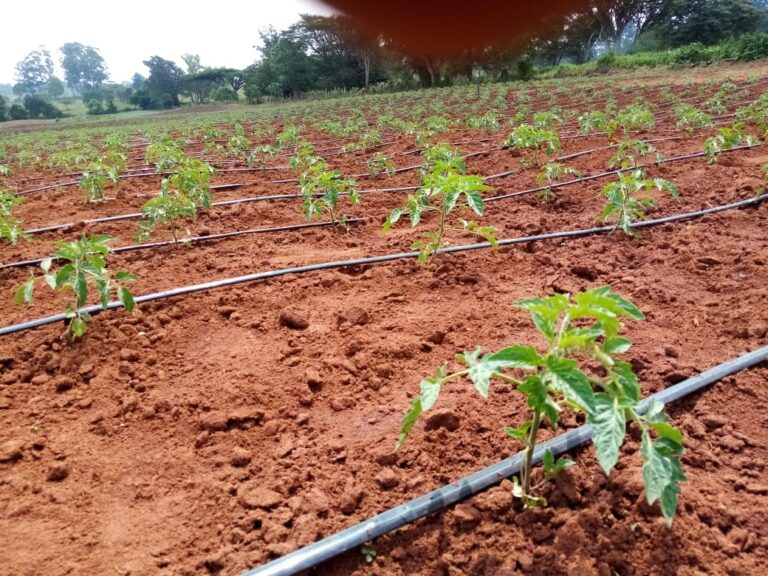
Tomato Drip Kit Price
Tomato drip kit price in Kenya by Grekkon Limited is by acreage. Our drip irrigation prices range as; kitchen gardens, 1/8th acre, 1/4 acre, 1/2 acre, 3/4acre and 1 acre. The components of these tomato drip are; HDPE pipe. The diameter ranges from 1″ to 1-1/2″ according to the size of the area HDPE fittings. […]
Cabbage Farming in Kenya
Cabbage farming in Kenya through irrigation requires even moisture to produce good heads. Our cabbage farming irrigation systems are; drip irrigation, sprinkler systems irrigation, and rain hose kits irrigation. Farmers’ cabbage water requirements are independent of the varieties grown. The best cabbage varieties to grow in Kenya are hybrids, which require consistent irrigation during growth. Successful cabbage farmers who supply the cabbage market in Kenya water 25 to 37 litres weekly. Good cabbage head sizes weighing 5kgs make it easy for a grower to choose where to sell cabbages in Kenya. Below is a review of cabbage irrigation farming requirements by systems
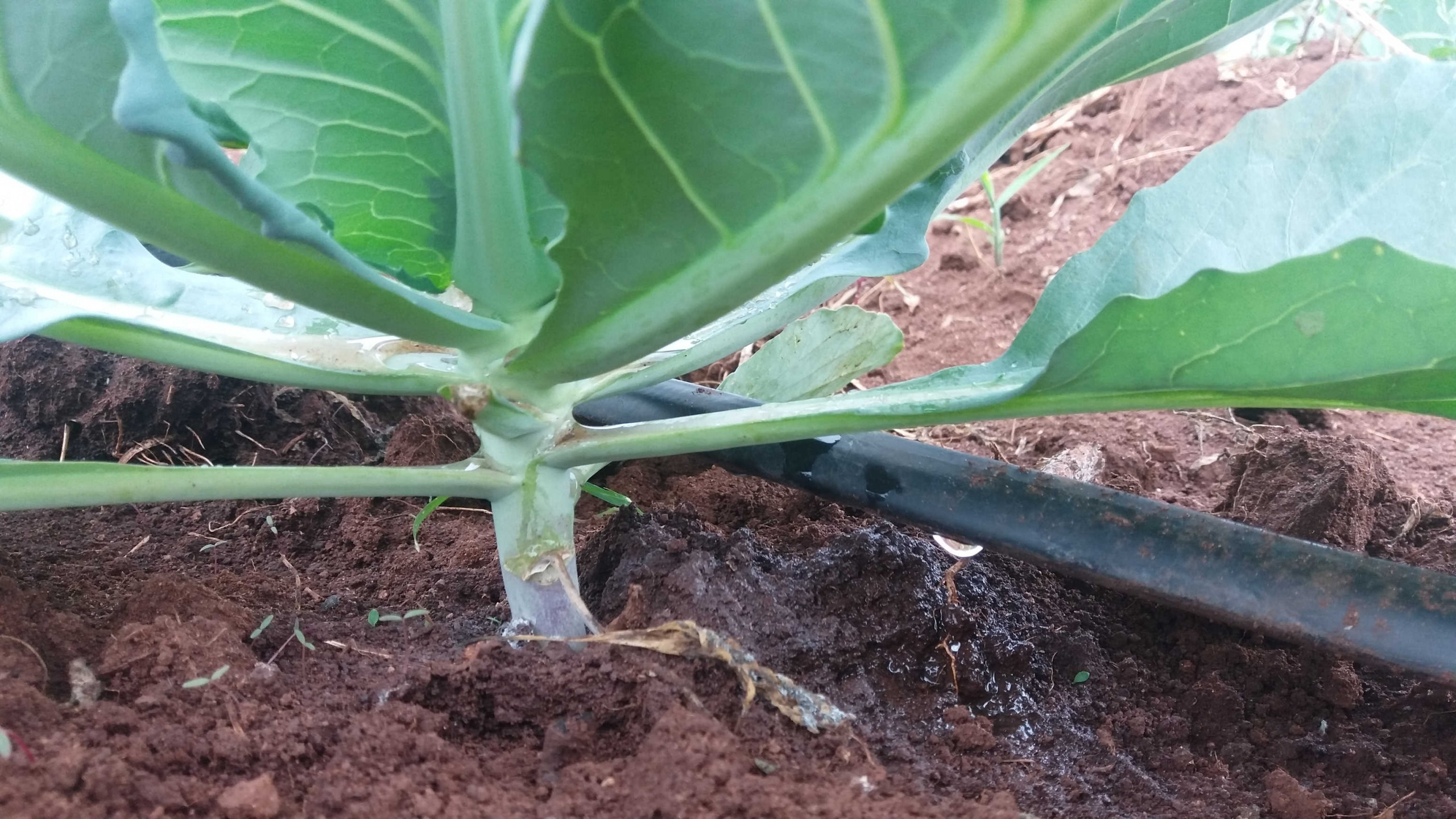
Drip irrigation in cabbage
1. Cabbage farming in Kenya; how to install a drip irrigation system on cabbage
- Bed making
Your beds will be 1M wide to allow for 3 rows of drip lines, and 30cm high for good drainage. Drainage is key to prevent root rot for cabbage as a result of too much stagnant water.
- Drip irrigation tapes laying
2 rows of drip lines per bed. Each drip line row is 20cm apart and the line is 20cm from the edge of the bed. Without beds, each row is 30cm apart
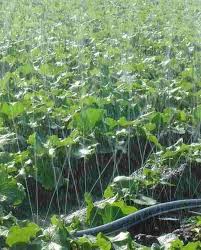
Rain hose irrigation in a cabbage farm
2. How to install a sprinkler irrigation system or rain hose irrigation kit
If you will not make beds, as shown above, then your cabbage spacing is 60 cm apart for rows. The inter-crop spacing is 30 cm to 45 cm. Place your sprinklers or rain hose pipes according to the radius of spray for each to cover the entire area.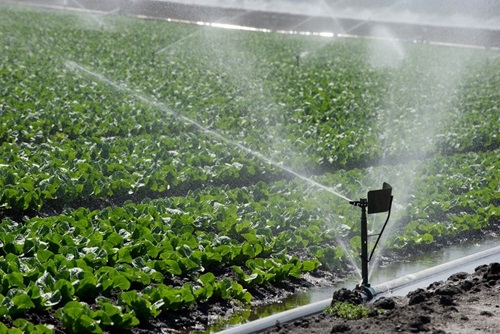
Overhead or sprinkler irrigation on cabbage
Cabbage Farming in Kenya FAQs
- 1-acre drip irrigation kit; Kes 145,000
- 1/2 acre drip irrigation kit; Kes 75,000
- 1/4 acre drip irrigation kit; Kes 40,000
- 1/8 acre drip irrigation; Kes 25,000
Use sparsely spaced drip emitters 30cm apart. This cabbage drip irrigation system will water every plant and they will be no irrigation dry shadows. Irrigate in the morning hours and avoid late evening irrigation
Yes. A cabbage plant will require up to 1inch or 25 litres per meter square weekly during the early stage. At maturity, this will be 2 inches/ 50 litres per meter square under dry conditions. Too much water causes root rot, so monitor that the soil is not overwatered
Stop watering onions 7 days before harvest. This improves the shelf life
Grekkon Limited’s drip irrigation systems operate at 10 to 35 PSI
Yes. 10 to 12 hours of sunlight for head formation in the tropics
Yes. Half an inch/ 12.5 litres per meter square of water 4 times a week is enough.
Yes
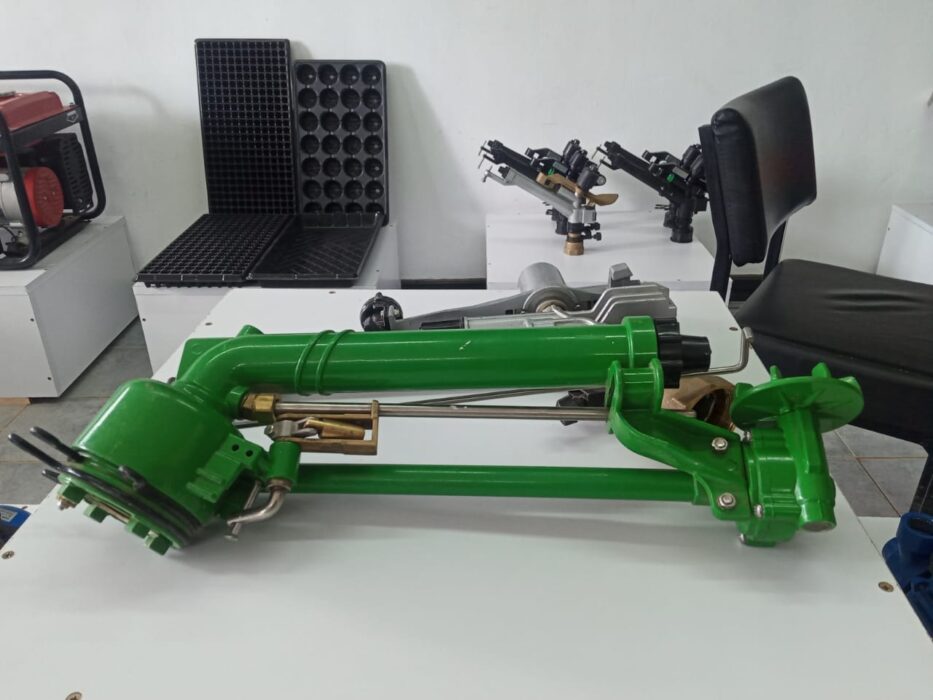
Irrigation company in Nyahururu
The story of an irrigation company in Nyahururu goes like this….In 2017, two Kenyan agri-prenuers came together to establish an irrigation systems firm to serve small to medium scale commercial farmers in Kenya. This was by providing tailored professional irrigation systems set up solutions that were within these farmers’ budgets. At the same time, improving the clients’ overall yield, and income from farming. The motivation to focus on this niche was because of the presence of large international irrigation service providers. Their clientele were the large ornamental, cereal and vegetable growers. Smaller growers had to fend for themselves because they were never a priority for these large corporates.
The other objective was to do further by offering expert irrigation, greenhouse, water pumps, and dam lining expertise to these small scale to medium scale commercial farmers, who had no professional entity to consult for such. This was through physical site visits to carry out assessments, provide advice, and carry out irrigation project reviews afterwards. And so, Grekkon Limited – Irrigation Hub was born. It was headquartered in Nairobi, Kenya’s capital, and in August 2020, Grekkon Limited opened Nyahururu irrigation hub in Nyahururu town.
The irrigation company in Nyahururu serves farmers in; Nyandarua, Nakuru, Laikipia, and Samburu counties. It is located along the Olkalau- Nyahururu road.
Innovation
Grekkon Limited is the first irrigation systems company in eastern Africa to introduce the rain hose irrigation system. This new product solved many irrigation challenges for commercial vegetable and corn farmers. The company is the market leader in research and commercialization of natural solar dryers. Each unit designed to meet the product or market drying requirements. Today, Grekkon Limited is the largest supplier of natural solar dryers in Northern Kenya, Nakuru, Laikipia and Samburu regions.
Team
Grekkon Limited’s resounding success is largely due to its team of field professionals in Nyahururu. They provide engineering, commercial, and technical services. In a first in the market, the company organizes ‘training days’ in various regions of the counties. Here, where growers come to learn of new and existing technologies. This knowledge sharing module has proved effective in addressing basic irrigation challenges that farmers go through. It has created trust in the company’s expertise.
Irrigation Company in Nyahururu
The Future
There is a growing number of medium scale farmers living in the cities, but farming in the upcountry. The need to create a web-based irrigation monitoring system is more pronounced than ever. Grekkon Limited’s IT team is developing a gadget responsive tool. It will enable farmers to irrigate and fertilise (through fertigation) their farms remotely. It also woks s a moisture monitoring tool to alert growers when crop moisture levels fall below normal levels.

Wooden Greenhouse Prices in Kenya
Wooden greenhouse prices in Kenya by Grekkon Limited are by size and choice of timber. This low cost greenhouse construction in Kenya takes the same amount of time to build as metallic greenhouses. In our local greenhouse construction, we include the following components A sanitary pouch. This is for disinfection of hands and feet as […]
Multi-Storey Gardens In Kenya
Grekkon Limited’s climate smart agriculture multi-storey gardens in Kenya are a vertical farming system popular with urban vegetable farmers. Growing herbs on a multi-storey garden in Kenya is now a common practice in limited spaces in densely populated locations. They are defined as climate smart agriculture because they conserve land and water
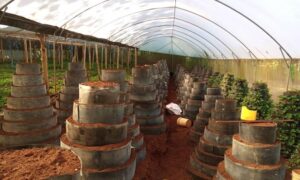
Multi-storey cropping in a greenhouse
What is a multi-storey garden?
It is a vertical farming method that limited space to create gardens stacked on each other. These vegetable crops (most common for kitchen gardens) provide a fresh supply of vegetables for subsistence or commercial use. Commonly grown crops are;
- Vegetables; kales, spinach, strawberry, coriander, carrot, garlic, leeks, black nightshade, amaranth
- Herbs and spices; rosemary, lemon grass, citronella, and mint
- Fruits; strawberry
A grower will choose to have the multi-storey farming system out in the open, or enclosed in a greenhouse or shade house. This multi-storey cropping is determined by the crop grown, or other factors such as crop destruction by pests or disturbance from pets. A grower will choose to have a shade net or dam liner as the supporting basis of this pyramid farming in Kenya. In this article, we look at the dam liner option
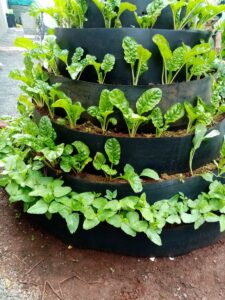
Spinach growing in on a kitchen multi-storey garden made from dam liner material
Our multi-storey garden price is Kes 2,500 a unit for the dam liner material type. This multi-storey garden cost covers all material and labor
How do you make multi-storey gardens in Kenya?
Key attributes of the dam liner material type garden
- Layers. It has 6 layers including the base
- Circumference. The base layer has a 6M circumference
- Layer reduction by height. Each layer is a meter less in circumference as it rises
- Height. Each layer has a height of 0.2M / 20cm
- Material. 0.75mm or 1mm thick HDPE dam liner to hold the soil together. The dam liner is bolted or welded at the joint
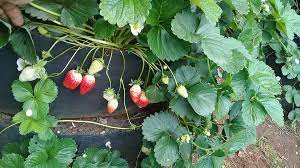
Strawberry growing on a multi-storey garden
To reduce soil compaction, and improve soil aeration, we mix soil with manure at a ratio of 2:1. On a space of 2M x 2M, a multi-storey garden will hold 180 to 250 plants. Compare this with a sack/ shade net supported garden that has 100-150 plants. And again with conventional ground farming that has 30-60 plants over the same area. All calculations factor in the walking path
Multi-storey garden materials
- dam liner
- joining clips
- soil
- fertiliser
How to irrigate multi-storey gardens in Kenya
Pre-perforated rip lines or button drippers irrigate these crops. Frequency of irrigation is twice or thrice weekly according to the prevailing weather
Multi-storey gardens in Kenya
FAQs
1. How to prepare a multi storey garden?
As described under the heading How do you make multi-storey gardens in Kenya? above
2. What is the size of a multi-storey garden?
6 square feet
3. What are the advantages of a multi-storey garden?
- It is easy to assemble, and maintain
- It saves on land and water
- They are done over small spaces
- You can grow many typesof vegetable crops on it
4. What are the disdavantages of a multi-storey garden?
- It takes time to design and make
- It requires training to make for the first time
- Expensive to undertake on a large scale. Ideal for small spaces
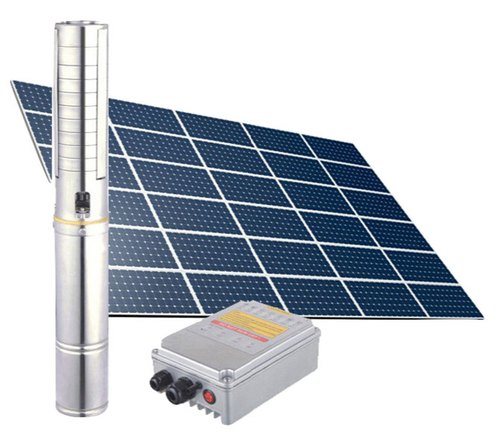
Solar Water Pump Prices
Solar water pump prices in Kenya by Grekkon Limited are provided based on the pump specs
Our submersible solar water pumps for sale in Kenya are categorised as;
- Motor size. This is given in kilo watts (kW) or horse power (Hp). The motor operates on direct current (DC) generated by the solar panels, or from a battery. The larger the motor size, the more the power a motor consumes, and provides to the pump
- Head. This is the pressure rating provided in meters (M) or bar. It determines how far vertically that pump will push water. The higher the pressure rating, the higher the push. Deep wells use higher pressure rated submersible solar pumps than shallow wells
- Flow rate. It is the volume of water evacuated over a given time unit. This is given as litres per second, or per minute, or as cubic litres per hour. This determines the size of the outlet pipe. A pump that evacuates more water has a larger outlet
Smaller domestic water pumps are portable solar water pumps. It is easy to move them from one shallow well to another. This is not the case for large, permanent, deep well solar water pumps
Solar Water Pump Prices In Kenya
| Model No | Power Hp | Watts | No & Panel Size | Head (M) | Flow rate (liters/ hour) | Price in Kes |
| SP 0.5N | 0.6 | 700 | 300W x 1pc | 40M | 5,800 | 37,120 |
| SP 0.6N | 0.8 | 1,200 | 300W x 2pcs | 60M | 5,800 | 40,215 |
| SP 0.8N | 1.1 | 1,300 | 300W x 3pcs | 70M | 5,800 | 46,400 |
| SP 1.0N | 1.3 | 1,400 | 300W x 3pcs | 80M | 5,800 | 52,600 |
The prices shown above are for solar water pumps for wells less than 100M. Beyond this, we provide specific pumps that match the borehole’s water specs. We install submersible solar water pumps across east Africa for all well sizes. Before an installation is made, a well analysis is conducted to ensure the right solar submersible water pump is provided.
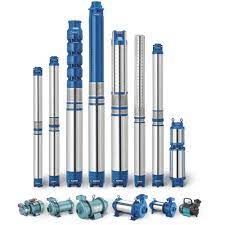
Water Pumps In Kenya
Water pumps in Kenya by Grekkon Limited are varied for different purposes. This provides a wide choice to select from for growers according to irrigation use. Below are water pumps by Grekkon Limited
Water pumps in Kenya
Categorisation
1. By displacement
1.1. Centrifugal pumps work through centrifugal force to drive water that enters the impeller. They use the rotational energy from the spinning impeller to produce hydrodynamic energy
1.2. Positive displacement water pumps use a piston, a diaphragm, or a rotating cog or gear to mechanically move a fixed volume of water through the pump chamber
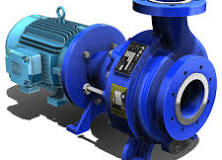
An electric centrifugal water pump
2. By Location
2.1. Surface pumps suck water through an inlet pipe, then pump it out from an outlet pipe. They are set horizontally on dry surface. Theses are; electric surface pumps including booster pumps, solar surface pumps, diesel and petrol generator water pumps
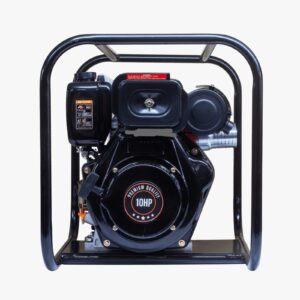
A diesel water pump
2.2. Submersible water pumps work under water in wells. The size and power depends on the well depth, and discharge rate. They are either solar or electric powered
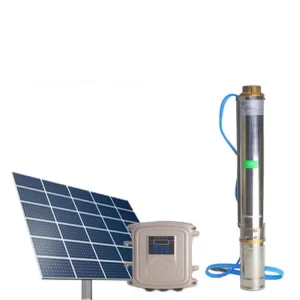
A submersible solar water pump
3. By power output
3.1. Electric motor powered pumps are either electric (AC current), or solar (DC current) water pumps
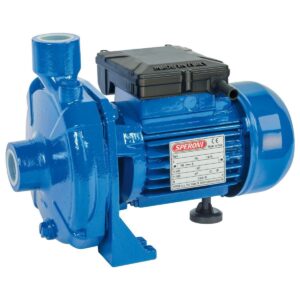
An electric surface pump
3.2. Generator powered water pumps are either diesel or petrol types. These are available as high pressure, high volume, low pressure and low volume
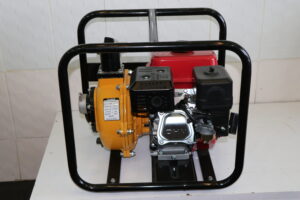
A petrol water pump
Water Pumps In Kenya
What To Consider When Buying Your Water Pump
1. The head/ pressure rating
This is the vertical pumping distance in meters or bars. The higher it is, the higher the pressure needed, and the more powerful is the engine or motor. Fuel engine (generator) or electric motor power is horse power (Hp), or in Kilowatts (kW) for the latter
2. The flow rate
This is the amount of water pumped evacuated per unit time. It is in litres per minute or per hour. The higher it is, the larger the water pump inlet and outlet size
For agricultural use, PVC or HDPE water pipes are connected to these pumps. The pipes evacuate water to the crops
3. The power rating
The motor or engine size provided in kilowatts (kW) for the former, and in horse power (Hp) for the latter determines the water pump’s efficiency. The larger the flow rate and the discharge, so will the engine or motor be
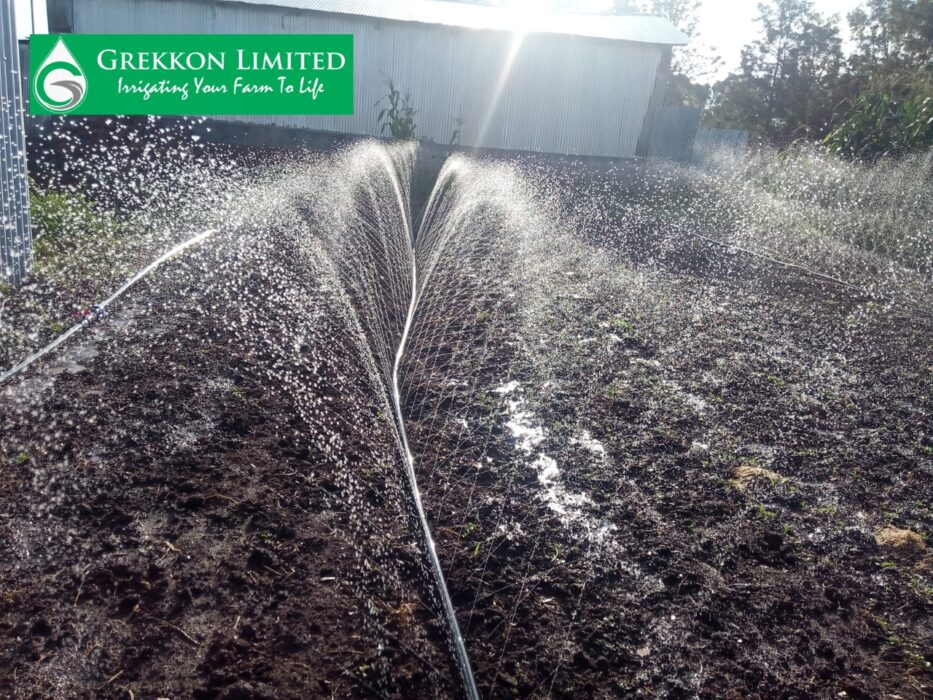
Rain Hose Irrigation System
Rain hose irrigation system with nanotechnology punched holes is an affordable irrigation system for overhead irrigation. Rain hose irrigation system uses nano technology to convey water to the plant. It has a series of holes spaced at intervals which sprays water flow by high gravity, or from a water pump is initiated. Our 0.5mm thick, 100M […]

